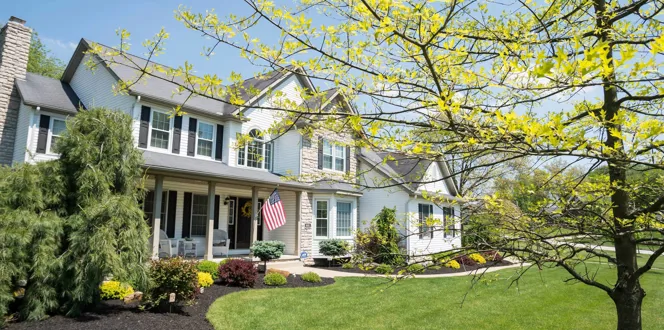From winter weather that disperses blankets of heavy snow and ice to summer’s hurricane-force winds, your trees can take a beating.
It’s true that homeowners in certain regions can get worse weather compared to others, particularly at certain times of the year. But in between the most severe storms, those sunny, calm days can put one at ease – so much so that they might unknowingly neglect tree care and inspections.
Branch breakage can happen pretty easily when harsh storms arrive, particularly if your tree is weak, injured, or suffering from an insect or disease infestation.
But protecting your tree and giving it some support where necessary can help it withstand Mother Nature’s extremes. In fact, you might be wondering how you can provide this type of tree branch support and does it really help?
Let’s look at a key tree support strategy and how it works to assist your trees.
What Is Cabling And Bracing A Tree?
The goal of tree support systems like cabling and bracing is to provide trees with some degree of supplemental support.
This reduces the potential risks of structural failure by limiting the movement of stems and branches with weak attachments.
This curbs injuries to people and damage to property by giving structurally weak tree parts a boost so when strong winds blow and ice weighs down they can stand strong.
Tree Cabling And Bracing Techniques
Tree support cables and braces are proactive and preventive additions to your tree meant to support its structure.
Davey’s certified arborists install flexible steel cables and solid steel braces to strengthen weak stems and branches.Cables and braces should allow a tree to flex somewhat so that it will grow stronger over time, but are meant to stop it from bending to the point of breaking.
When Should A Tree Be Cabled?
The outcome you’re seeking by cabling and bracing trees is to reduce stress damage from high winds, heavy snow and ice, or even heavy foliage.
Your arborist will only suggest using this technique if he or she has identified weak points in one of your trees that is overall stable and healthy, but has a codominant stem or significant branch that could use some support.
By using this proactive technique, you can reduce damage, costs, and risks.
How Long Does Tree Cabling Last?
Tree limb support cables that are installed properly by a professional, trained arborist can last 20 to 40 years. Maintenance following tree cable and brace installation is minimal but also important, and the hardware should be inspected for damage and corrosion periodically by a professional arborist. The integrity of the wood which anchors the hardware must also be assessed.
Regular inspections of your tree cables and braces by licensed arborists can ensure the integrity of the hardware, cable, and tree sections. These should be inspected from the ground annually, and inspected up close to assess the tree by climbing or with an aerial lift every 3-5 years.
Why You Should Hire A Professional Arborist
When it comes to tree cable support, especially for larger trees, hiring a certified arborist can ensure the job is done properly and safely.
Tree limbs can be heavy and require some specialized cabling and bracing techniques. Professionals who have been through extensive training can use the correct tools and do the job properly to reduce risks and protect you, your tree, and your property.





